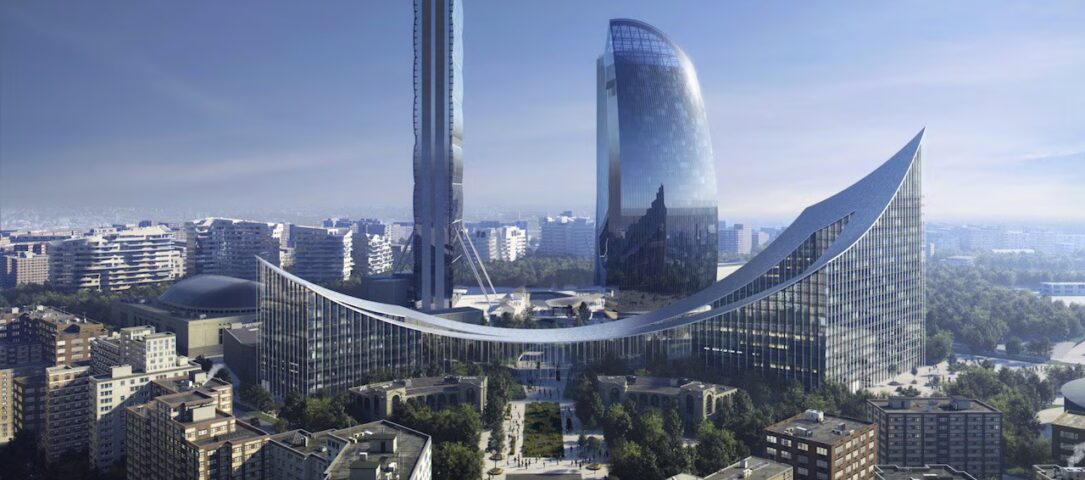
Milan isn’t just Italy’s fashion and financial capital—it's also a living museum of architecture, where history and innovation stand side by side. From the intricate Gothic spires of the Duomo to futuristic high-rises like Bosco Verticale, the city offers a breathtaking journey through centuries of architectural evolution.
As Milan continues to evolve, it remains a city where architects push boundaries while honoring tradition. This balance between past and future makes it one of the most fascinating urban landscapes in the world.
Timeless Landmarks: Milan’s Historic Treasures
Milan is a city where history is written in stone, marble, and glass. Its architectural treasures span centuries, reflecting the artistic, political, and cultural shifts that have defined both the city and Italy as a whole. Unlike many historical cities that have remained frozen in time, Milan has continually reinvented itself, seamlessly blending its past with its present.
Milan’s historic architecture is more than just a backdrop for daily life—it's a narrative of ambition, resilience, and artistic mastery. Each structure embodies the era it was born in, yet remains deeply relevant today.
Whether you’re drawn to the intricate details of Gothic cathedrals, the refined elegance of Renaissance courtyards, or the grandeur of 19th-century urban planning, Milan offers a stunning range of architectural gems. Here are some of the most significant landmarks that define the city’s historic core.
Duomo di Milano: A Gothic Marvel That Defines the City
Towering over the heart of Milan, the Duomo di Milano is not just the city’s most famous landmark—it's a symbol of Milanese identity itself. Construction began in 1386, initiated by Gian Galeazzo Visconti, and took nearly six centuries to complete, resulting in a cathedral that embodies multiple artistic influences while remaining firmly rooted in the Gothic tradition.
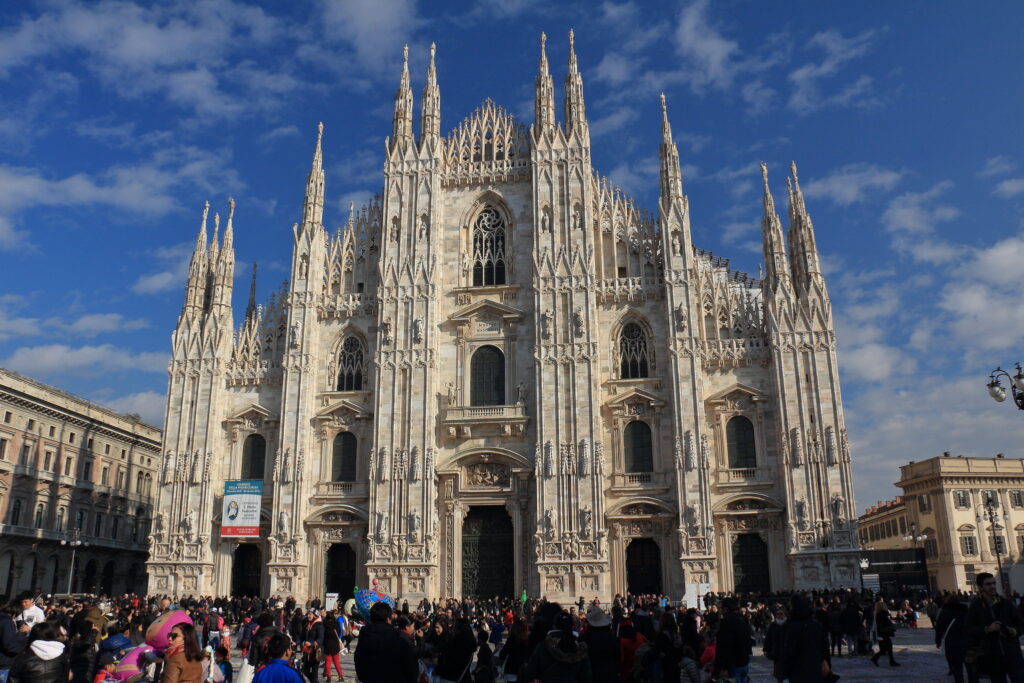
The cathedral’s exterior is an extraordinary display of craftsmanship, with over 3,400 statues, 135 spires, and intricate carvings that tell biblical and historical stories. The delicate lacework of its façade, made from the pink-tinged Candoglia marble, changes color throughout the day, glowing in the morning light and turning golden at sunset. Inside, the vast nave is flanked by towering columns, each adorned with statues, while the stained glass windows — some of the largest in the world — bathe the interior in a kaleidoscope of colors.
One of the most unforgettable experiences is ascending to the Duomo’s rooftop. Here, visitors can walk among the spires and gargoyles, taking in a breathtaking panoramic view of Milan. On clear days, the Alps form a dramatic backdrop, reminding visitors of the cathedral’s enduring place in the landscape. The golden Madonnina statue, perched atop the highest spire, has watched over Milan since 1774, serving as both a religious and civic protector.
The Duomo is not just a church — it’s a living monument to Milan’s artistic ambition. Every statue, spire, and stained-glass panel carries the weight of centuries, making it a must-visit for anyone seeking to understand the city’s soul.
Galleria Vittorio Emanuele II: The Epitome of Milanese Elegance
Nicknamed «Milan's drawing room,» the Galleria Vittorio Emanuele II is far more than just a shopping arcade — it is an architectural masterpiece that embodies the city’s 19th-century grandeur. Designed by Giuseppe Mengoni and completed in 1877, this stunning passageway was one of the first examples of an iron-and-glass-covered arcade, a prototype for modern shopping centers.
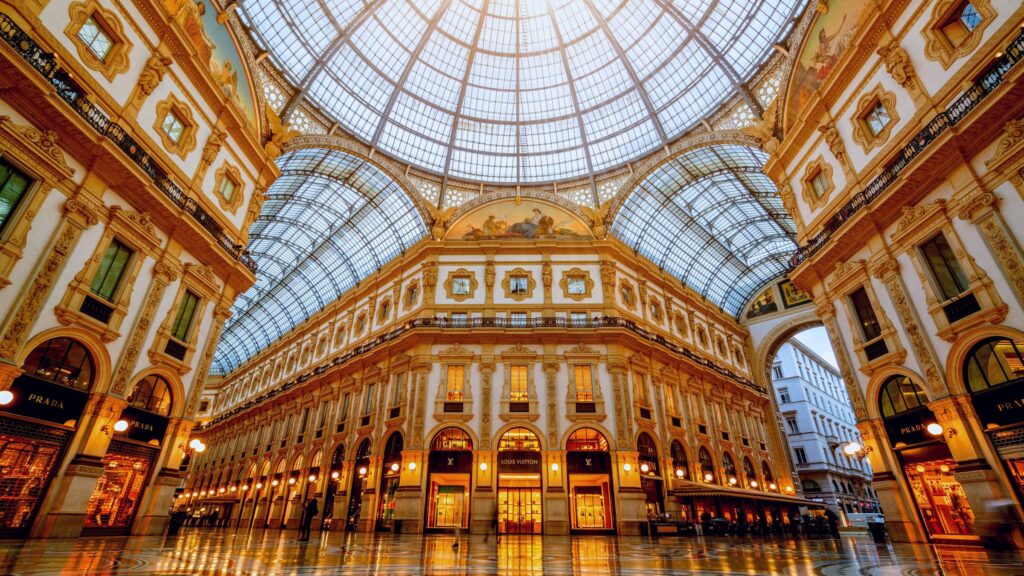
The Galleria connects Piazza del Duomo with Piazza della Scala, forming a symbolic bridge between Milan’s religious and cultural hearts. Its cross-shaped layout is crowned by a soaring glass dome, allowing natural light to flood the space and highlight the intricate mosaic floors beneath. These mosaics depict the coats of arms of Milan, Rome, Florence, and Turin, as well as symbolic images representing different aspects of Italian life. One particularly famous mosaic features a bull from Turin’s coat of arms—legend has it that spinning on its testicles brings good luck, a tradition that continues today.
More than just a historical landmark, the Galleria remains a hub of Milanese life. It houses some of the city’s most prestigious boutiques, including Prada’s original store, which has been here since 1913. Elegant cafes like Biffi and Camparino have served writers, politicians, and fashion icons for generations, offering a taste of Milanese sophistication.
The Galleria is where Milanese style, history, and daily life converge. Whether you’re admiring the architecture, indulging in luxury shopping, or simply sipping an espresso, you’re stepping into a space that has defined Milan’s identity for over a century.
Santa Maria delle Grazie: Home to Leonardo’s Masterpiece
Tucked away in a quiet corner of Milan, Santa Maria delle Grazie is a UNESCO-listed church that holds one of the world’s most celebrated artworks—The Last Supper by Leonardo da Vinci. Built in the late 15th century, the church is a striking blend of Gothic and Renaissance styles, reflecting the transition between two great artistic movements.
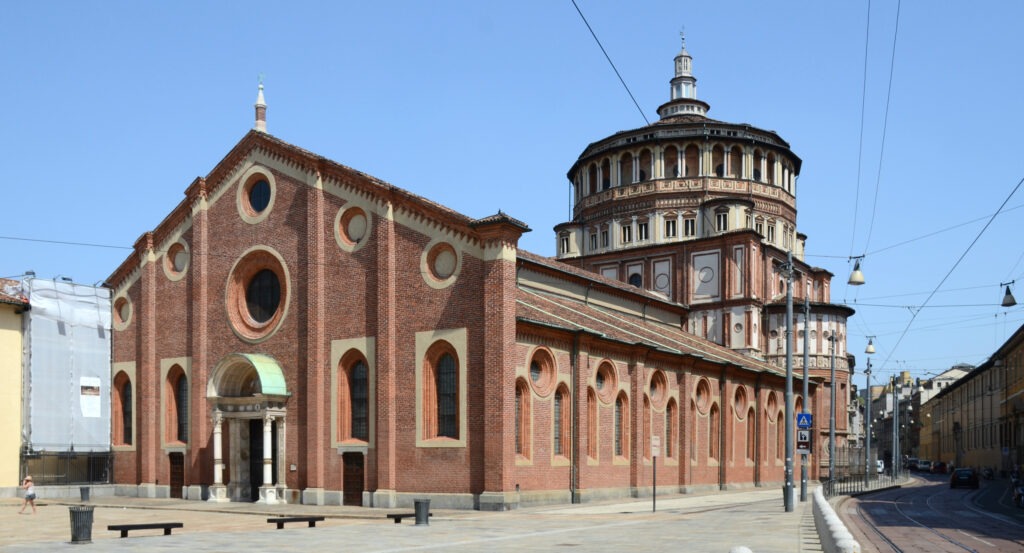
The church itself, designed by Guiniforte Solari, features a red brick façade with elegant terracotta decorations. However, the real architectural gem is the tribune, redesigned by Donato Bramante, one of the great masters of Renaissance architecture. The combination of soaring arches, delicate columns, and circular windows creates a sense of harmony and lightness, a stark contrast to the robust medieval elements of the original structure.
Inside the refectory of the adjacent convent, Leonardo da Vinci’s The Last Supper covers an entire wall. Painted between 1495 and 1498, this mural is a revolutionary interpretation of a biblical scene, capturing the emotional intensity of the moment when Jesus reveals that one of his disciples will betray him. Unlike traditional frescoes, Leonardo experimented with a dry plaster technique, which, unfortunately, led to the painting’s rapid deterioration. Over the centuries, it has survived bombings, neglect, and countless restorations, making its survival almost as remarkable as the artwork itself.
Due to its fragility, strict measures are in place to protect The Last Supper. Visitors must book months in advance, and only small groups are allowed inside for 15-minute intervals. Yet, standing in front of this masterpiece, witnessing Leonardo’s mastery of light, perspective, and human emotion, is an unforgettable experience.
Seeing *The Last Supper* in person is like stepping into art history. Despite centuries of damage and restoration, its power to captivate remains undiminished.
Castello Sforzesco: From Medieval Fortress to Cultural Beacon
Originally built in the 14th century by the powerful Visconti family, Castello Sforzesco has served many roles throughout history—from military fortress to ducal palace to one of Milan’s most important cultural institutions. Expanded and transformed by the Sforza rulers in the 15th century, the castle was once adorned with elaborate frescoes by artists like Leonardo da Vinci and Bramante, making it a Renaissance jewel.
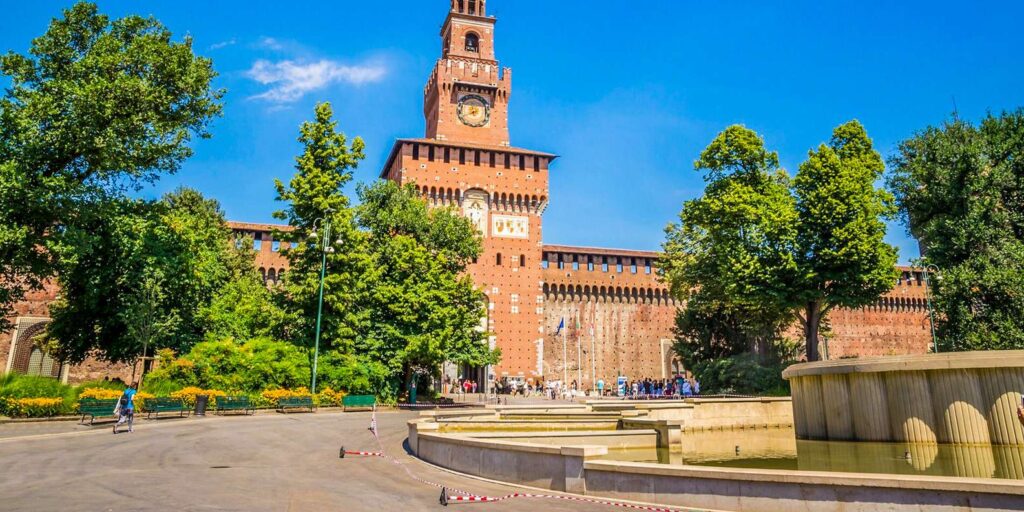
Its massive walls, defensive towers, and central courtyard make it one of the most imposing structures in Milan. Today, however, it is a gateway to art, history, and knowledge. The castle houses several museums, including the Museo Pietà Rondanini, where Michelangelo’s final, unfinished sculpture is displayed, offering a poignant glimpse into the artist’s last years. The Pinacoteca del Castello features works by Mantegna, Bellini, and Canaletto, while the Museum of Ancient Art showcases medieval weapons, tapestries, and the stunning Sala delle Asse, decorated by Leonardo himself.
Beyond its museums, Castello Sforzesco serves as a vibrant cultural space. Its vast courtyard often hosts concerts, exhibitions, and open-air events, while the adjacent Sempione Park offers a tranquil escape from the city’s bustle.
The castle’s walls have witnessed centuries of intrigue, artistry, and transformation. Today, they house some of Milan’s greatest cultural treasures, proving that history and creativity continue to thrive side by side.
Milan’s historic landmarks are more than just relics of the past—they are living, breathing spaces that continue to shape the city’s identity. Each of these sites tells a unique story, weaving together art, history, and innovation in a way that only Milan can.
Icons of 20th-Century Architecture
While Milan is often celebrated for its historic treasures, it is also a city that embraces modernity with open arms. Throughout the 20th century, architects and visionaries reshaped the skyline, introducing bold forms, innovative materials, and groundbreaking design concepts. From rationalist masterpieces to futuristic skyscrapers, Milan’s modern architecture is a testament to its forward-thinking spirit.
Milan’s 20th-century architecture is not just about aesthetics — it’s a reflection of social, economic, and technological evolution. These buildings tell the story of a city that continually reinvents itself while staying true to its design heritage.
Whether you’re drawn to sleek glass facades, brutalist concrete structures, or avant-garde urban planning, Milan offers a rich collection of architectural gems that have defined the modern era. Here are some of the city’s most iconic 20th-century landmarks.
Torre Velasca: Milan’s Controversial Landmark
Rising above the city like a medieval watchtower, Torre Velasca is one of Milan’s most recognizable—and debated—buildings. Designed by the architectural firm BBPR and completed in 1958, this 106-meter-tall structure was a radical departure from the glass-and-steel modernism that defined much of post-war architecture. Instead, the architects looked to Milan’s past, taking inspiration from the city’s fortified castles and historic towers.
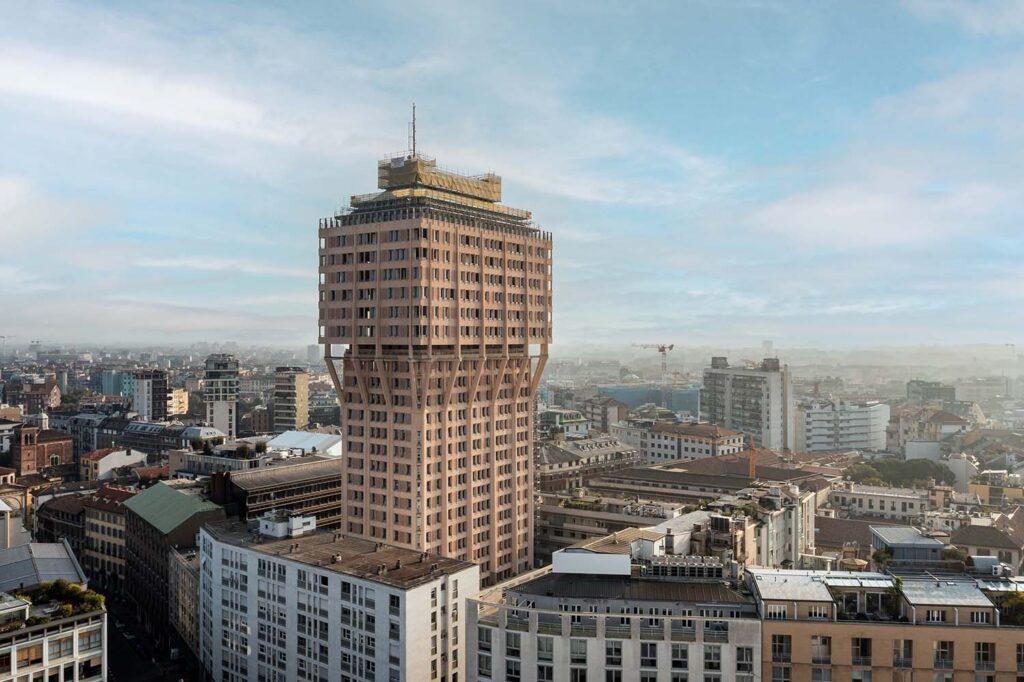
The building’s most striking feature is its flared upper section, which creates a dramatic, almost fortress-like silhouette. This design was not just aesthetic—it was also functional. The lower floors house commercial spaces and offices, while the upper levels contain residential apartments, requiring a wider floor plan at the top. This practical yet bold approach made Torre Velasca a symbol of Milan’s ability to merge history with modernity.
Despite its initial controversy—some critics dismissed it as an eyesore—Torre Velasca has since become a beloved icon of Milanese architecture. Its unique blend of brutalism and tradition has earned it a place on Italy’s list of historically protected buildings, ensuring its presence in the city’s skyline for generations to come.
Love it or hate it, Torre Velasca is impossible to ignore. Its unconventional form challenges expectations and proves that Milanese architecture is never afraid to take risks.
Pirelli Tower: The Elegance of Rationalism
A masterpiece of modernist architecture, the Pirelli Tower (Torre Pirelli) is one of Milan’s most elegant skyscrapers. Designed by Gio Ponti in collaboration with Pier Luigi Nervi and Arturo Danusso, the tower was completed in 1960 and immediately set a new standard for high-rise design.
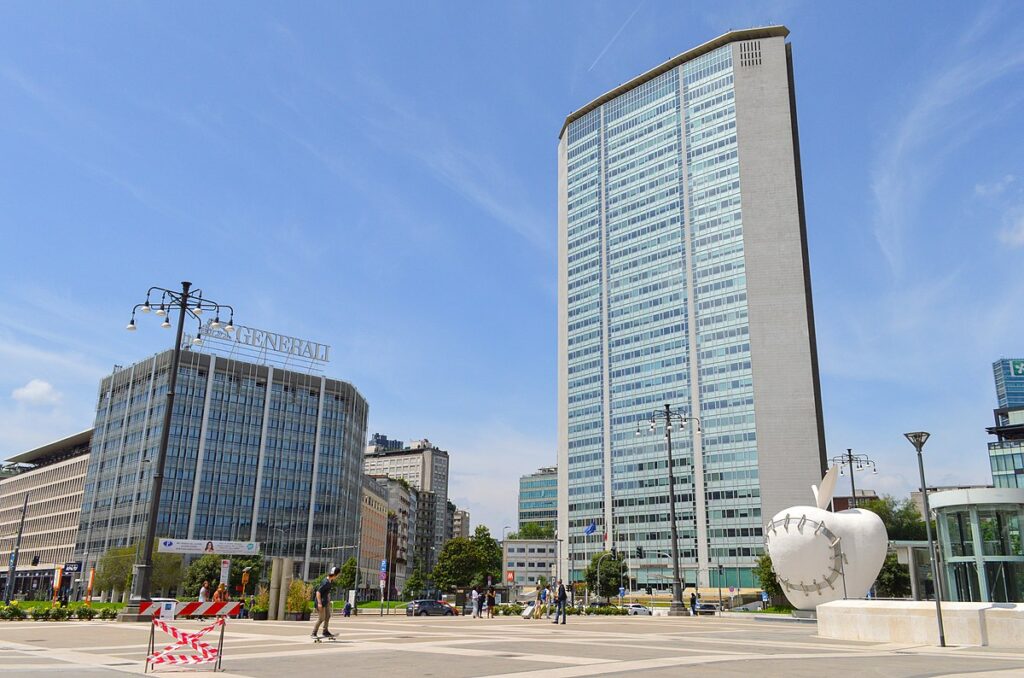
At 127 meters tall, the Pirelli Tower was, for a time, the tallest building in Italy. Unlike the rigid, boxy skyscrapers of the era, it features a sleek, tapered form that gives it a sense of lightness and dynamism. The façade, composed of glass and aluminum, reflects the ever-changing sky, while the building’s slender profile minimizes its footprint, making it a model of efficient urban planning.
Inside, the tower was designed with flexibility in mind. Its open-plan floors, supported by an innovative structural system, allowed for adaptable workspaces, a feature that was ahead of its time. Over the decades, the Pirelli Tower has housed offices for major corporations and government institutions, cementing its role as a center of Milanese business and innovation.
More than 60 years after its completion, the Pirelli Tower remains a symbol of Milan’s post-war resurgence and a testament to Gio Ponti’s visionary approach to architecture. It continues to inspire architects around the world with its perfect balance of form, function, and elegance.
The Pirelli Tower is not just a building — it’s a statement. Its refined silhouette and innovative design embody Milan’s spirit of modernity and progress.
Villa Necchi Campiglio: A Hidden Gem of Modernist Luxury
Tucked away in a quiet part of Milan, Villa Necchi Campiglio is a stunning example of early 20th-century modernist architecture. Designed by Piero Portaluppi in the 1930s for the wealthy Necchi-Campiglio family, this private residence combines Art Deco influences with streamlined rationalist design, creating a unique blend of elegance and functionality.
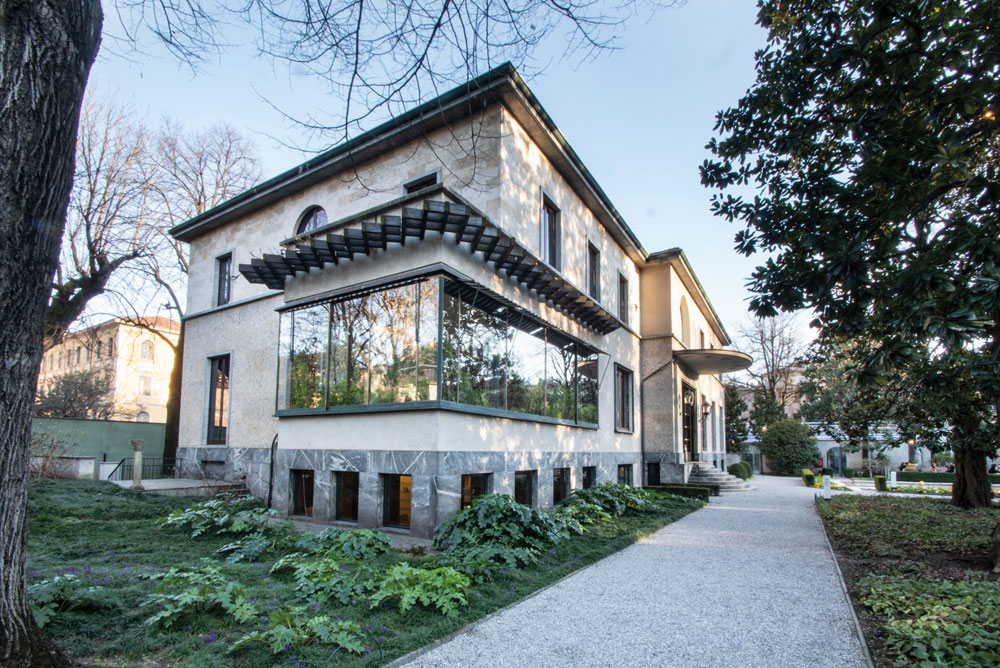
Unlike the towering skyscrapers that dominate Milan’s modern landscape, Villa Necchi Campiglio is an intimate space, designed with meticulous attention to detail. The exterior features clean geometric lines, large windows that flood the interiors with natural light, and a seamless integration with the surrounding garden. The villa was one of the first homes in Milan to have an indoor swimming pool, highlighting its cutting-edge luxury.
Inside, the villa is a time capsule of 1930s sophistication. The grand salon, with its curved glass windows and rich wood paneling, reflects the glamour of the era. The study and library showcase Portaluppi’s ability to merge aesthetics with practicality, while the bedrooms remain impeccably preserved, offering a glimpse into the refined lifestyle of Milan’s elite.
Today, Villa Necchi Campiglio is a museum open to the public, offering visitors a rare look at Milanese high society in the early 20th century. Its perfectly preserved interiors and lush gardens make it a must-visit for architecture and design enthusiasts.
Villa Necchi Campiglio is a masterpiece of understated luxury. Every detail, from the furniture to the lighting, reflects an era when design was both a science and an art.
San Siro Stadium: A Monument to Football and Engineering
Few structures in Milan evoke as much passion as San Siro Stadium. Built in 1926 and expanded multiple times throughout the 20th century, this colossal arena is more than just a sports venue—it's a symbol of Milanese culture, uniting generations of football fans.
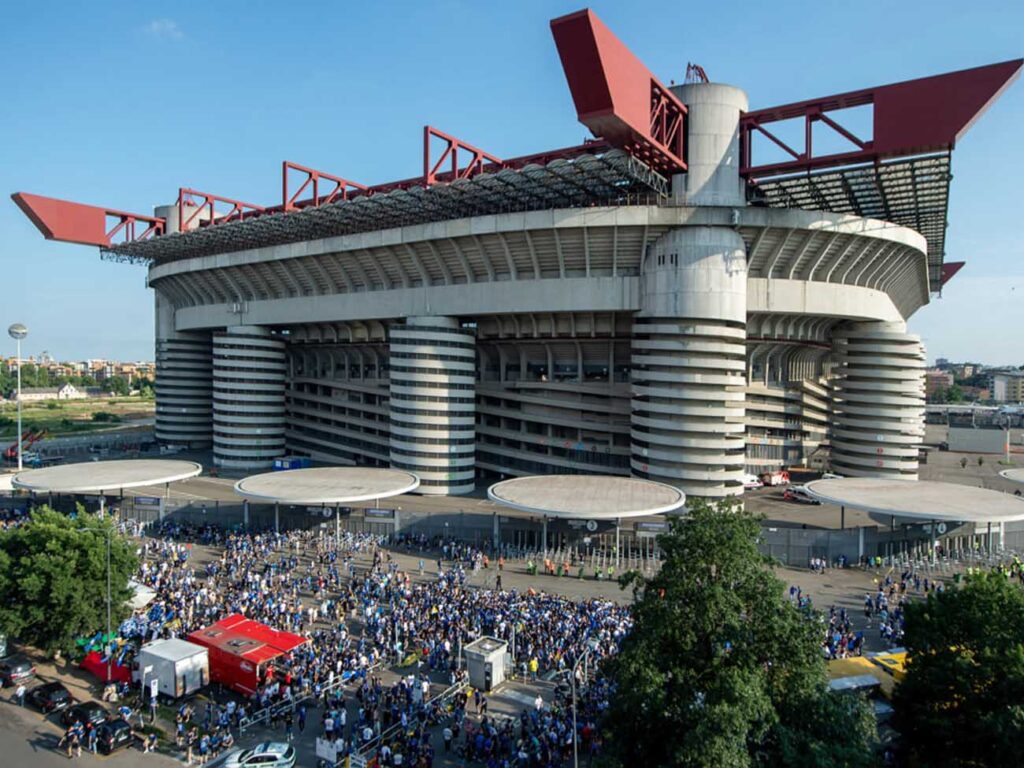
San Siro’s design has evolved over the decades, but its most recognizable features are the spiraling access towers and the imposing red girders that support the upper tiers. The stadium can hold over 75,000 spectators, making it one of the largest football venues in Europe. Its steeply tiered seating ensures an electrifying atmosphere, whether it’s a derby between AC Milan and Inter or an international championship final.
Beyond football, San Siro has also hosted legendary concerts, from Queen and U2 to Beyoncé and Coldplay, solidifying its place as a cultural landmark. Despite ongoing discussions about replacing it with a new stadium, San Siro remains a beloved icon, deeply embedded in the heart of Milanese identity.
San Siro is not just a stadium — it’s a cathedral of football. Its towering stands and roaring crowds make it one of the most electrifying venues in the world.
Milan’s 20th-century architecture is a bold expression of innovation, resilience, and artistic ambition. These landmarks, each unique in form and function, illustrate how the city continues to evolve while honoring its rich design heritage. Whether you’re admiring the futuristic silhouette of Torre Velasca or stepping inside the timeless elegance of Villa Necchi Campiglio, Milan’s modern masterpieces reveal a city that never stops reinventing itself.
Contemporary Architectural Marvels
Milan has always been a city where tradition meets innovation, and nowhere is this more evident than in its contemporary architecture. Over the past few decades, the city has undergone a dramatic transformation, embracing bold, sustainable, and futuristic designs that redefine its skyline.
Milan’s contemporary architecture is more than just a visual statement—it's a reflection of the city’s ambition, sustainability goals, and global influence. These cutting-edge structures blend aesthetic brilliance with functionality, creating spaces that inspire and shape the urban landscape.
From eco-friendly skyscrapers to striking cultural hubs, these modern marvels showcase Milan’s commitment to forward-thinking design. Here are some of the city’s most spectacular contemporary architectural achievements.
Bosco Verticale: A Living, Breathing Skyscraper
A revolutionary approach to urban living, Bosco Verticale (Vertical Forest) is one of Milan’s most internationally acclaimed architectural projects. Designed by Stefano Boeri and completed in 2014, this pair of residential towers in the Porta Nuova district redefines what a skyscraper can be.
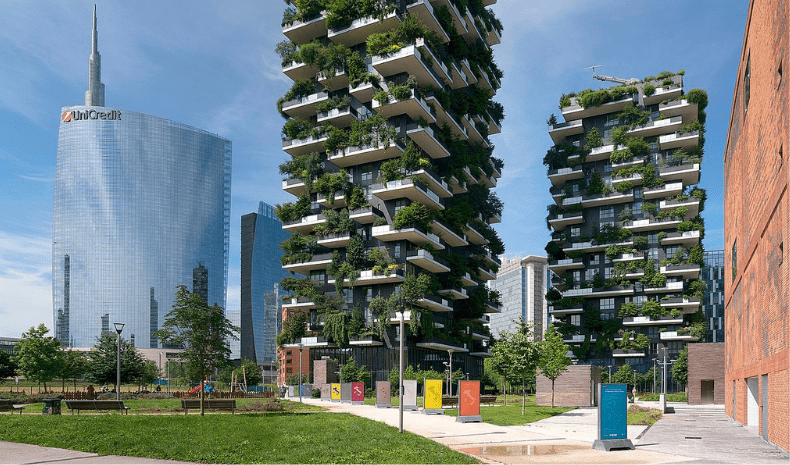
Standing at 111 and 76 meters tall, these towers are unlike any other high-rises in the world. Their façades are covered with more than 900 trees and thousands of shrubs and plants, creating a vertical ecosystem that improves air quality, absorbs CO₂, and reduces urban heat. The greenery also serves as a natural noise barrier and provides insulation, cutting down on energy consumption.
But Bosco Verticale is not just an environmental statement — it’s a masterpiece of modern engineering. The building’s structure had to be specially reinforced to support the weight of the vegetation, while an advanced irrigation system ensures that the plants thrive year-round. Residents enjoy breathtaking views, enhanced privacy, and a deep connection with nature, even in the heart of the city.
Bosco Verticale proves that skyscrapers don’t have to be cold, lifeless structures. It’s a model for future cities, where architecture and nature coexist in perfect harmony.
UniCredit Tower: The Tallest Symbol of Modern Milan
Piercing the sky at 231 meters, UniCredit Tower is Milan’s tallest building and a defining landmark of the city’s contemporary skyline. Designed by César Pelli and completed in 2012, this glass-clad skyscraper is the centerpiece of the Porta Nuova business district, symbolizing Milan’s role as a global financial hub.
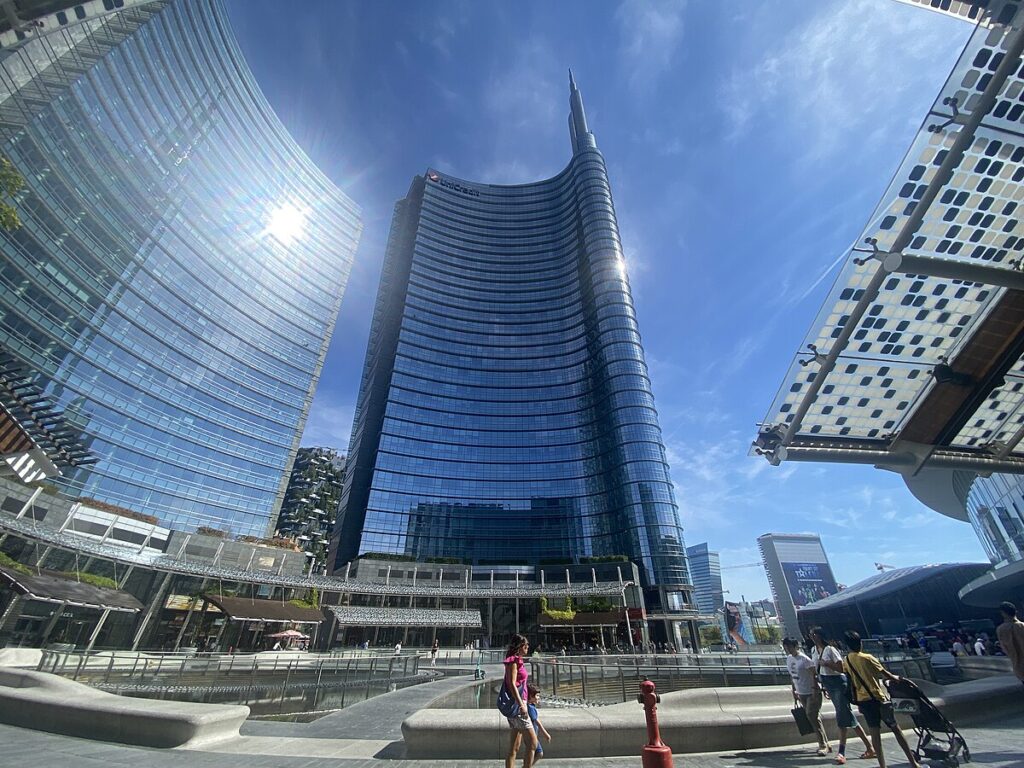
The tower’s most distinctive feature is its elegant, spiraling design, which culminates in a striking steel spire. This curved silhouette not only enhances its aesthetic appeal but also serves a functional purpose, reducing wind resistance. The reflective glass façade, equipped with energy-efficient technology, maximizes natural light while minimizing heat absorption, making it a model of sustainable skyscraper design.
Inside, UniCredit Tower houses the headquarters of Italy’s largest bank, but its lower levels are open to the public, featuring shops, restaurants, and a lively piazza. The adjacent Gae Aulenti Square, with its futuristic fountains and interactive light installations, has become one of Milan’s most vibrant social hubs.
UniCredit Tower is more than just Milan’s tallest building — it’s a statement of progress, innovation, and sustainable urban development.
Fondazione Prada: Where Art and Architecture Collide
A perfect fusion of contemporary art and visionary architecture, Fondazione Prada is one of Milan’s most fascinating cultural spaces. Opened in 2015, this ambitious project transformed a former gin distillery into a cutting-edge art complex, with designs by Rem Koolhaas and his firm, OMA.
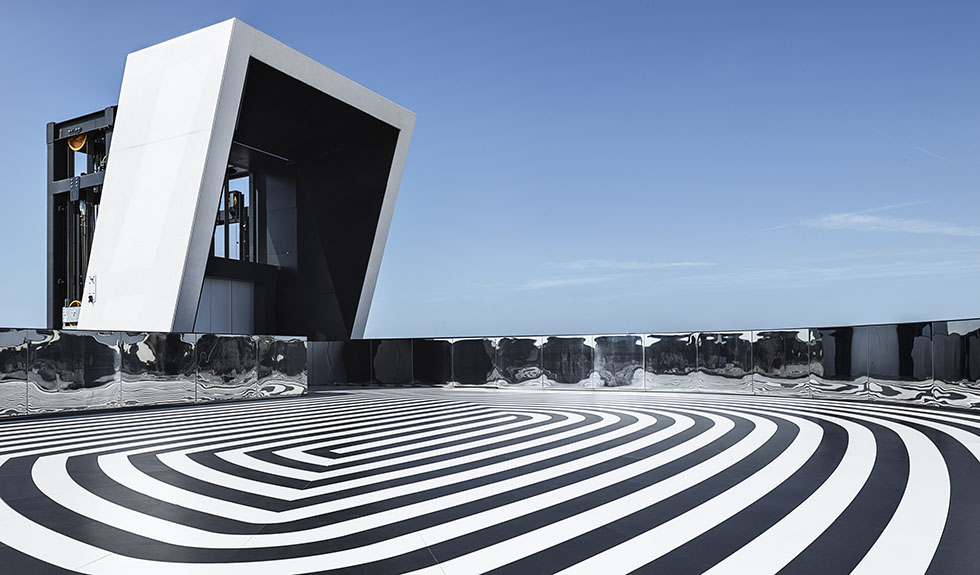
The foundation’s layout blends old and new, preserving elements of the original industrial structures while introducing striking modern additions. The most eye-catching of these is the Haunted House—a four-story tower entirely covered in shimmering 24-karat gold leaf, creating a surreal contrast against the raw concrete and glass surroundings.
Inside, Fondazione Prada hosts rotating contemporary art exhibitions, film screenings, and avant-garde installations, drawing creative minds from around the world. The complex also features Bar Luce, a café designed by filmmaker Wes Anderson, offering a nostalgic yet playful atmosphere inspired by mid-century Milanese style.
Fondazione Prada is not just a museum—it's an experience. Every corner surprises, challenges, and redefines what contemporary art spaces can be.
CityLife District: The Future of Urban Living
Once the site of Milan’s old trade fairgrounds, CityLife has been transformed into a futuristic district that epitomizes contemporary urban development. Featuring three spectacular skyscrapers designed by some of the world’s most renowned architects — Zaha Hadid, Arata Isozaki, and Daniel Libeskind—this area is a bold statement of Milan’s architectural ambitions.
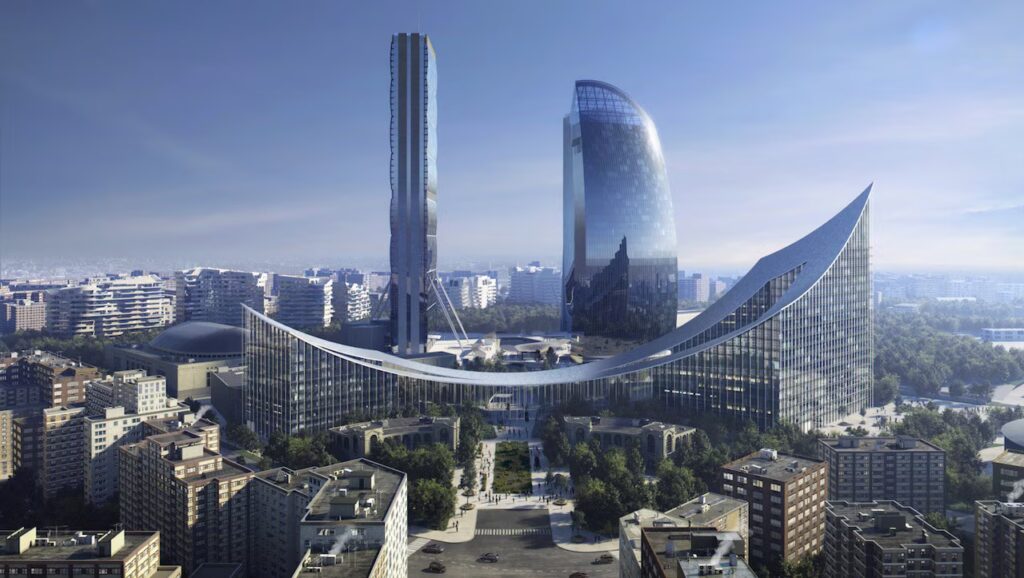
- Generali Tower («Lo Storto») by Zaha Hadid: This twisting, fluid-shaped skyscraper stands at 177 meters and is a marvel of dynamic design, reflecting Hadid’s signature organic curves.
- Allianz Tower («Il Dritto») by Arata Isozaki: At 209 meters, this is the tallest building in the district, with a sleek and minimalist glass façade symbolizing clarity and strength.
- PwC Tower («Il Curvo») by Daniel Libeskind: This 175-meter skyscraper features a dramatic curved profile, inspired by the concept of an open book, representing knowledge and progress.
Beyond its striking skyline, CityLife is one of the most sustainable districts in Europe. The area is completely pedestrianized, with sprawling green parks, cycling paths, and a cutting-edge underground shopping center. Its smart-city infrastructure incorporates renewable energy, rainwater recycling, and innovative waste management systems, making it a model for eco-conscious urban planning.
CityLife is not just a district — it’s a vision of what cities can become: greener, smarter, and designed for the people.
Feltrinelli Foundation: Milan’s Modern Cultural Beacon
A bold, angular structure that commands attention, the Feltrinelli Foundation headquarters is one of Milan’s most striking contemporary buildings. Designed by Herzog & de Meuron and completed in 2016, this glass-and-steel masterpiece reinterprets the city’s historical architectural elements in a modern context.

Inspired by traditional Milanese palazzi and rationalist design, the elongated structure features a sharp, triangular profile and expansive glass windows that flood the interiors with natural light. Inside, the foundation serves as a cultural and research center, dedicated to literature, philosophy, and social sciences.
The building’s minimalist yet powerful aesthetic reflects its mission — bridging knowledge, creativity, and urban life. It has quickly become a favorite among architects and intellectuals, adding a new layer to Milan’s ever-evolving cultural landscape.
The Feltrinelli Foundation is a reminder that architecture can be both intellectually and visually stimulating, shaping not just cities, but the ideas that define them.
Milan’s contemporary architecture is a testament to its bold vision for the future. These landmarks, blending cutting-edge technology with sustainable design, showcase a city that continues to push the boundaries of innovation while staying true to its artistic heritage. Whether admiring the green oasis of Bosco Verticale or the dazzling skyline of CityLife, one thing is clear — Milan’s architectural evolution is just getting started.
Interior and Cultural Spaces
Milan is not just a city of grand facades and towering skyscrapers—it's a place where interior spaces are designed to captivate, inspire, and immerse visitors in a world of creativity. From historic opera houses to avant-garde cultural hubs, the city’s interiors blend art, history, and innovation, creating some of the most breathtaking and thought-provoking environments in the world.
Milan’s interior and cultural spaces are more than just venues — they are living works of art, each telling a story through design, craftsmanship, and atmosphere. Whether it’s the gilded elegance of La Scala or the modern experimentalism of HangarBicocca, these spaces define Milan’s soul.
Let’s step inside some of Milan’s most stunning and culturally significant interiors.
Teatro alla Scala: The Pinnacle of Opera Elegance
Few places embody the grandeur of Milan’s artistic heritage quite like Teatro alla Scala. Since its opening in 1778, this world-famous opera house has been the heart of Italian opera, hosting legendary performances by Verdi, Puccini, and Toscanini. But beyond the music, La Scala’s interior is an architectural masterpiece.
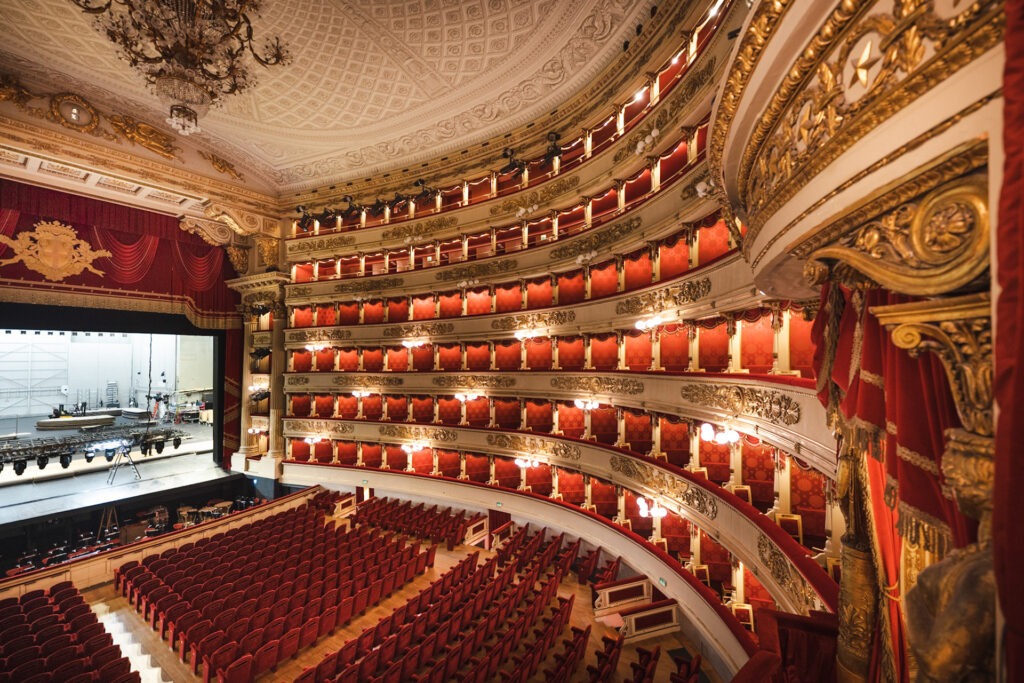
As soon as you step inside, you’re enveloped in opulence. The horseshoe-shaped auditorium, with its six tiers of private boxes, is draped in red velvet and illuminated by a breathtaking Murano crystal chandelier. Gold-leaf moldings and intricate frescoes add to the theater’s regal atmosphere, creating a space that feels both intimate and majestic.
La Scala is not just a venue — it’s an experience. The acoustics, perfected over centuries, make every note resonate with clarity and depth. Even the backstage areas, steeped in history, whisper tales of the great performers who have graced this legendary stage.
Walking into La Scala is like stepping into a time capsule of musical and architectural brilliance — every detail, from the ornate balconies to the gleaming stage, is a testament to centuries of artistic excellence.
Villa Necchi Campiglio: A Time Capsule of Milanese Elegance
Tucked away in a quiet garden in central Milan, Villa Necchi Campiglio is a hidden gem of 20th-century design. Built in the 1930s by architect Piero Portaluppi for the wealthy Necchi Campiglio family, this stunning residence is a perfect blend of Art Deco, Rationalism, and understated luxury.
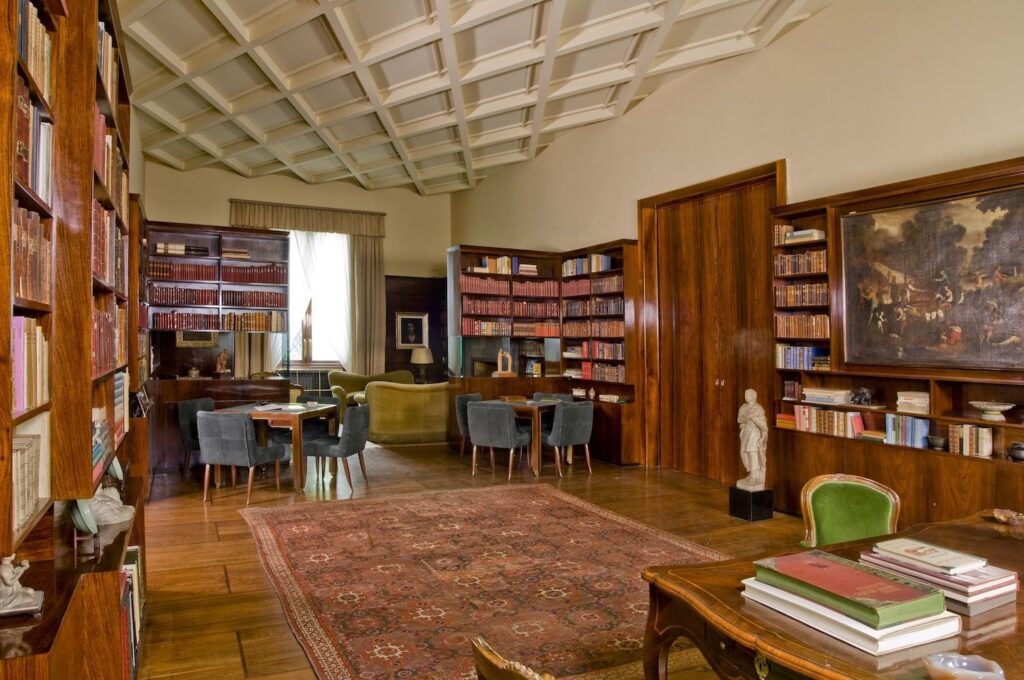
The villa’s interiors are a feast for design lovers. Sleek, geometric lines contrast with rich materials like walnut wood, marble, and polished brass. Every room tells a story, from the sophisticated drawing rooms adorned with original paintings to the impeccably preserved kitchen that offers a glimpse into the daily life of Milan’s elite in the early 20th century.
What makes Villa Necchi even more special is its seamless connection between interior and exterior. Large windows open onto a lush garden with a swimming pool — a rare feature for a Milanese home of this era. It’s a tranquil oasis in the heart of the city, offering a glimpse into a bygone era of elegance and refinement.
Villa Necchi Campiglio is not just a house — it’s a journey back in time, where every detail, from the custom-designed furniture to the art collection, reflects the sophistication of Milan’s high society.
Fondazione Prada: A Surrealist Playground for the Imagination
Stepping inside Fondazione Prada is like entering an alternate reality. This sprawling contemporary art complex, designed by Rem Koolhaas, redefines the concept of museum space, merging industrial heritage with experimental design.
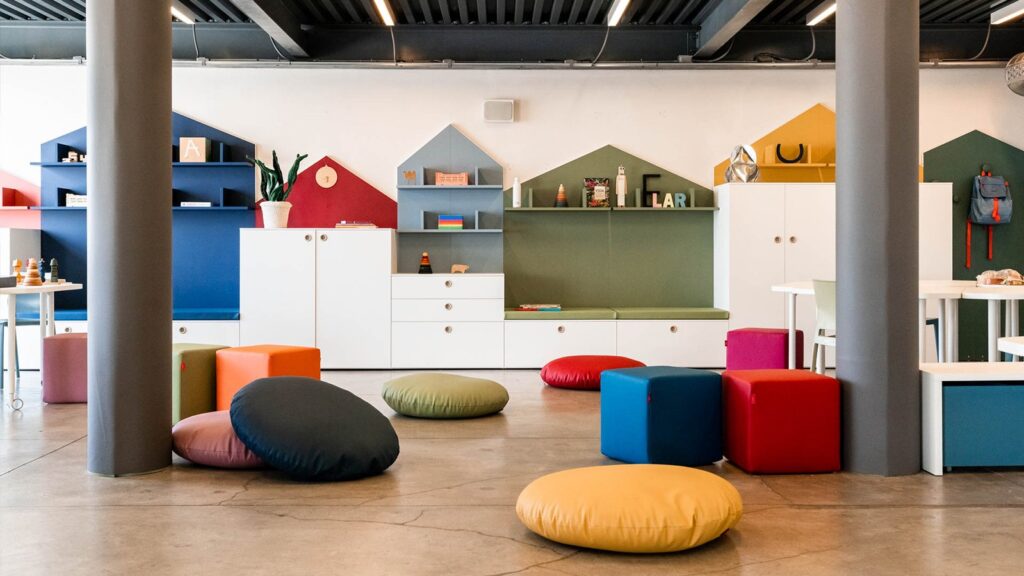
The interiors are deliberately unpredictable. One moment, you’re in a cavernous hall with exposed concrete walls; the next, you find yourself in the Haunted House—a surreal, golden-clad tower with eerie, dreamlike installations. Each gallery space is designed to challenge perception, shifting between light-filled minimalism and dark, immersive environments.
Even the smallest details add to the atmosphere. The staircases twist at unexpected angles, the lighting subtly changes to enhance the mood, and in some rooms, mirrored surfaces distort reflections, making visitors feel like they’ve stepped into a living art piece.
And then there’s Bar Luce, a café designed by Wes Anderson, where pastel colors, retro furnishings, and whimsical details transport visitors into a cinematic dreamscape.
Fondazione Prada is more than an art space — it’s a playground for the mind, where architecture and creativity collide to challenge the way we experience culture.
HangarBicocca: An Industrial Cathedral of Contemporary Art
If Fondazione Prada is surreal, HangarBicocca is monumental. Housed in a vast former train factory on Milan’s outskirts, this contemporary art space embraces its industrial past, transforming raw, cavernous interiors into awe-inspiring exhibition halls.
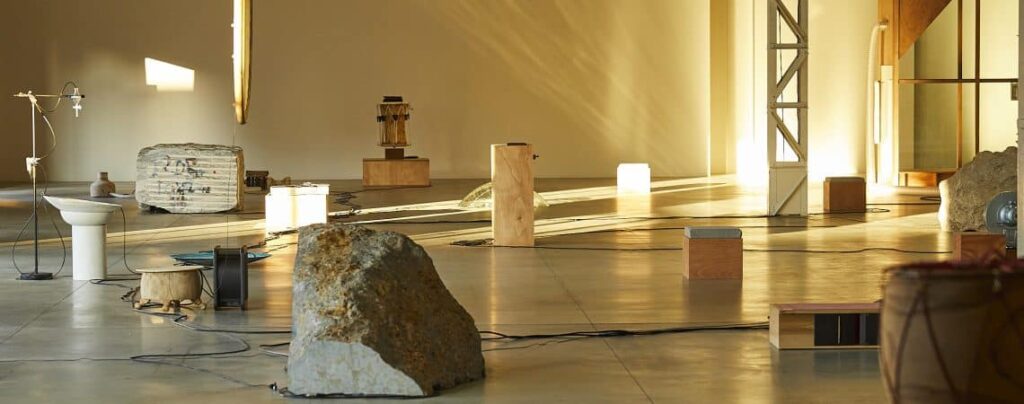
One of its most striking features is Anselm Kiefer’s The Seven Heavenly Palaces — a permanent installation of seven towering concrete structures that loom like ancient ruins, filling the space with a sense of mystery and power. The sheer scale of the room, with its exposed metal beams and dim lighting, amplifies the impact of the artwork, creating a spiritual and almost otherworldly experience.
Other exhibitions take full advantage of the space’s dramatic proportions, allowing for large-scale installations that simply wouldn’t be possible in a traditional museum. The result is an ever-evolving landscape of contemporary creativity, where art and architecture merge in unexpected ways.
HangarBicocca isn’t just a museum — it’s an experience. The vast industrial setting, combined with avant-garde installations, makes every visit feel like stepping into another dimension.
Biblioteca degli Alberi: A Library Without Walls
A different kind of cultural space, Biblioteca degli Alberi (Library of Trees) reimagines what a public library can be. Located in the heart of Milan’s modern Porta Nuova district, this innovative green space blends landscape design with cultural engagement.
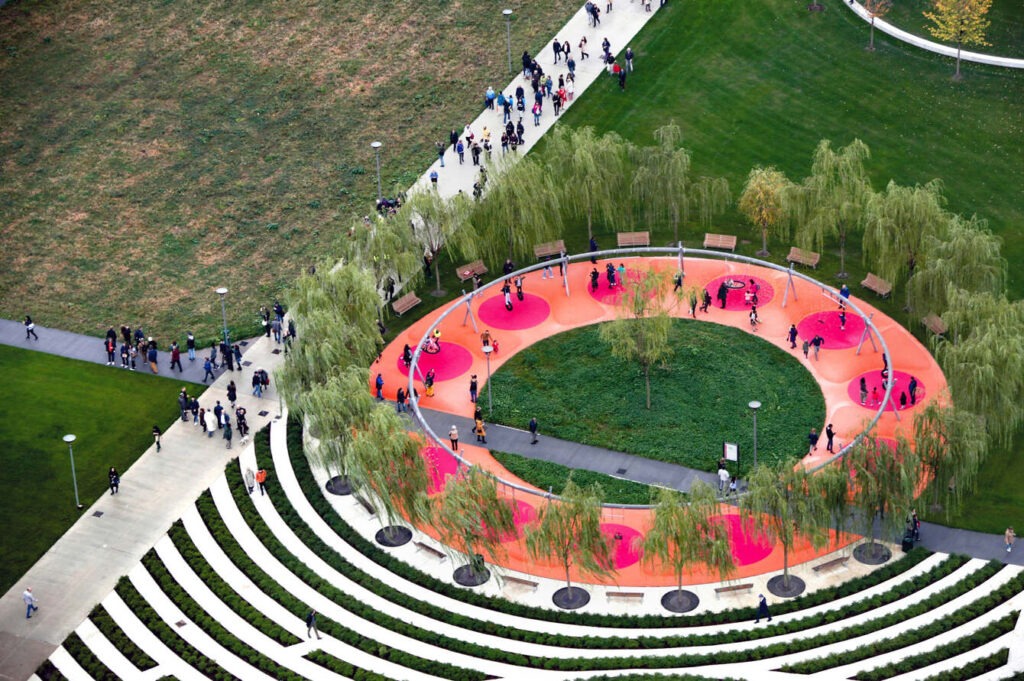
Rather than bookshelves and reading rooms, the «library» consists of over 90,000 plants arranged in geometric patterns, forming open-air rooms where people can relax, read, or participate in cultural events. Paved pathways wind through themed gardens, while shaded seating areas invite quiet contemplation.
More than just a park, Biblioteca degli Alberi is a dynamic cultural space, hosting open-air concerts, art installations, and community workshops. It’s a place where nature and knowledge coexist, offering a refreshing contrast to Milan’s dense urban fabric.
In a city known for its historic libraries and grand museums, Biblioteca degli Alberi reinvents the concept of a cultural space — one where nature, art, and community come together in perfect harmony.
Milan’s interior and cultural spaces offer more than just visual beauty — they tell stories, evoke emotions, and redefine how we experience art, history, and design. Whether stepping into the lavish world of La Scala or exploring the raw industrial beauty of HangarBicocca, every space reveals a different facet of the city’s creative spirit.
Milan: A Living Canvas of Architectural Brilliance
Milan is more than just a city — it’s an ever-evolving masterpiece where history, innovation, and design converge. From the Gothic grandeur of the Duomo to the sleek lines of modern skyscrapers, every street, piazza, and skyline tells a story of artistic ambition and architectural evolution.
Milan doesn’t just preserve architecture — it redefines it, pushing the boundaries of what a city can be.
What sets Milan apart is its ability to embrace change while honoring its past. Medieval fortresses stand beside avant-garde cultural hubs, and centuries-old palazzos coexist with sustainable, high-tech urban developments. This seamless blend of tradition and modernity makes the city a must-visit destination for architecture lovers and design enthusiasts alike.
Whether you’re admiring Leonardo da Vinci’s Renaissance masterpieces, exploring rationalist icons of the 20th century, or standing in awe of futuristic vertical forests, Milan offers an unforgettable journey through time, style, and vision. It’s a city where architecture isn’t just a backdrop — it’s a way of life.

